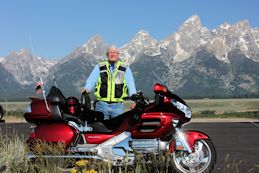Imperial China, The Yangtze River & Tibet
May, 2007 an OAT Tour
Chengdu
 An Overnight in Chengdu
We arrived in Chengdu, population 9 million, late in the afternoon after our bus trip from Chongqing. Chengdu is a very modern city known for its gardens filled with hibiscus bushes and teahouses. We need to restock some camera supplies and everything was available. I bought a 2 gig compact flash card for my camera - made in Taiwan. I also logged on to the Internet in the electronics store and was able to look at my web page. I guess this means people in China can read this documentary. Or, maybe by now the Chinese government has blocked it out. Chengdu first became a capital city during the Three Kingdoms (221 AD) after getting a reputation for its silk brocade and being the first to print paper money. Chengdu is now known as the city of the Hibiscus. It is located in the mountains loved by the Panda and it is always cool and overcast.
The Panda Research Center
We returned to Chengdu after three days in Lhasa, Tibet. This time we visited the famous Panda Research Center. Breeding programs in China, and other zoos around the world, are trying to save the population of 1,200 from extinction. The rare giant panda can now only be found in wild in 12 reserves dedicated to panda preservation in the mountains around Chengdu. It is ironic that the Panda lives on a plant, bamboo leaves, which has so little nutrients that nothing else eats it. Most of the time the Panda sleeps in order to conserve energy. Now its food source is threatened as the areas are carved up by human development. Pandas in the wild live a solitary existence in clearly defined territory marked by scent. Pandas are not prolific breeders and only have a brief breeding window. The panda baby weighs just 3 1/2 oz. at birth and are carried by the mother for 90 days and stays with her for up to three years. The panda's paw is modified into a sort of opposable "thumb" that helps grasp bamboo stems.
Index to all China 2007 Advantures:
so be patient and come back to watch its growth.
This page was created by Bob "Belli" Frazee
Return to Belli's Home Page If you have any questions, or corrections, just write to Belli.
|


